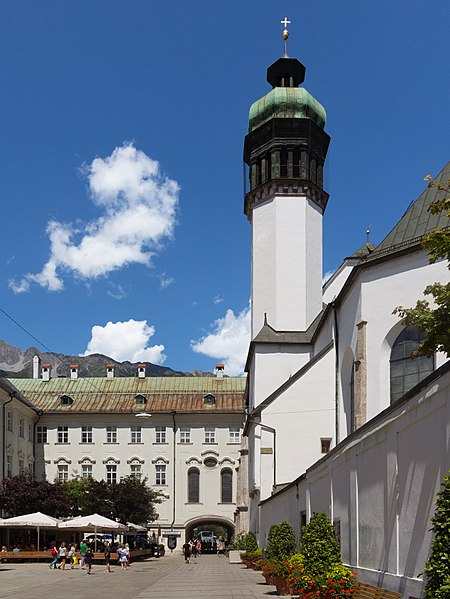Court Church

The Hofkirche (Court Church) is a Gothic church located in the Altstadt (Old Town) section of Innsbruck, Austria. The church was built in 1553 by Emperor Ferdinand I (1503–1564) as a memorial to his grandfather Emperor Maximilian I (1459–1519), whose cenotaph within boasts a remarkable collection of German Renaissance sculpture. The church also contains the tomb of Andreas Hofer, Tyrol's national hero.Although Maximilian's will had directed that he be buried in the castle chapel in Wiener Neustadt, it proved impractical to construct there the large memorial whose plans he had supervised in detail, and Ferdinand I as executor planned construction of a new church and monastery in Innsbruck for a suitable memorial. In the end, however, Maximilian's simple tomb remained in Wiener Neustadt and the Hofkirche serves as a cenotaph.
Excerpt from the Wikipedia article Court Church (License: CC BY-SA 3.0, Authors, Images).Court Church
Franziskanerplatz, Innsbruck Innenstadt (Innsbruck)
Geographical coordinates (GPS) Address External links Nearby Places Show on map
Geographical coordinates (GPS)
| Latitude | Longitude |
|---|---|
| N 47.26839 ° | E 11.39525 ° |
Address
Hofkirche (Schwarzmanderkirche)
Franziskanerplatz
6020 Innsbruck, Innenstadt (Innsbruck)
Tyrol, Austria
Open on Google Maps








